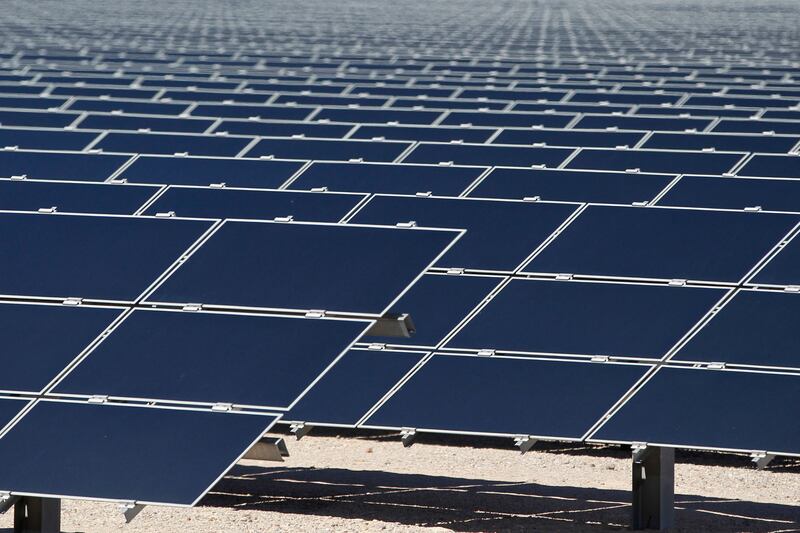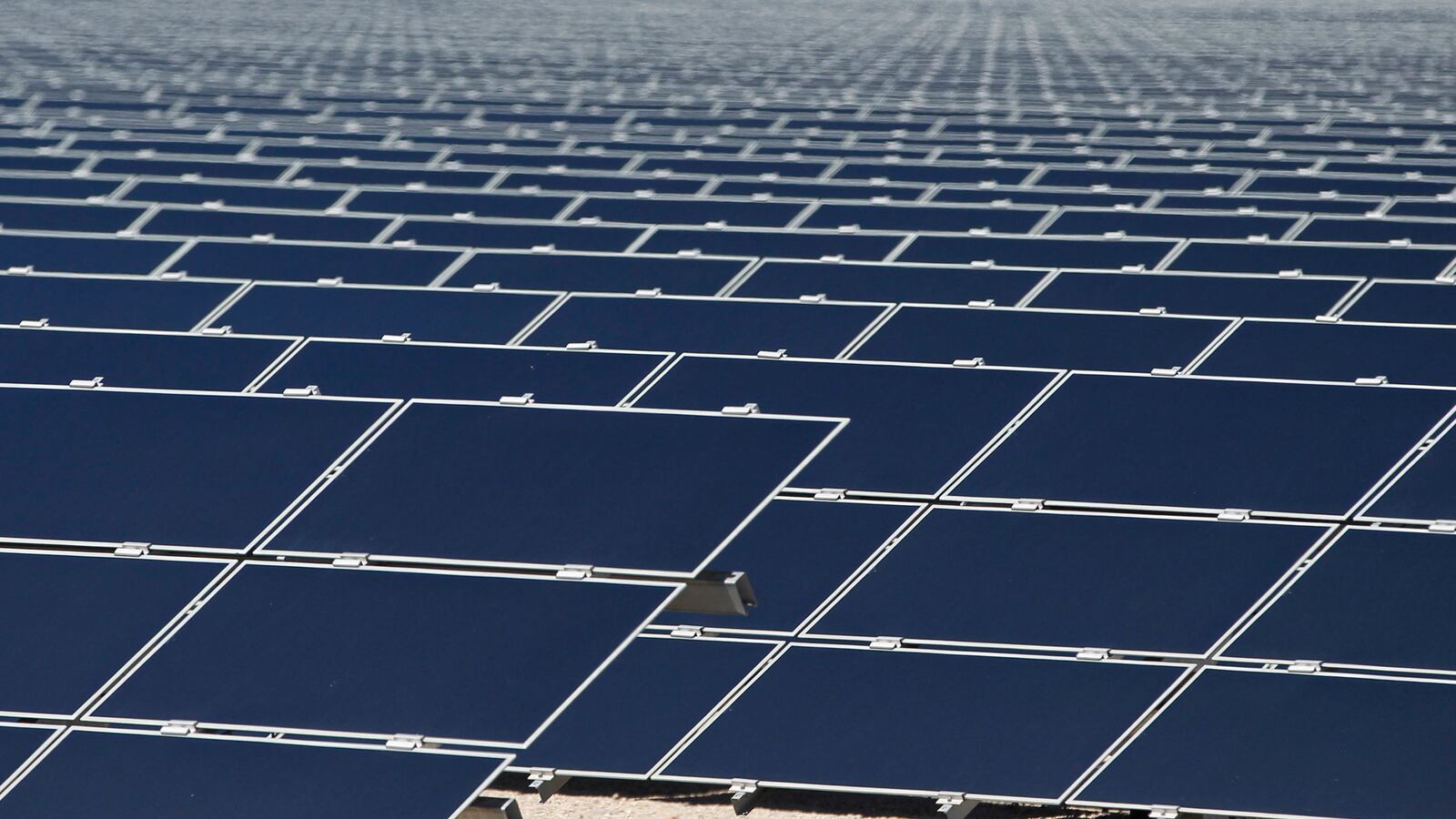In Oklahoma, the wind comes sweeping down the plain. But if you decide to harness this free resource to create electricity, you may have to make monthly payments to a huge corporation. A law passed this week by the Oklahoma state legislature permits utilities to charge user fees on customers with renewable energy installations—like rooftop solar panels and wind turbines.

To some observers, this is a classic Red State action to try to restrain the growth of renewable energy. “I think itʼs just a pre-emptive strike,” said Carrie Hitt, senior vice president of state affairs at the Solar Energy Industries Association. “In a few places, utilities and others are proposing to impose fixed charges on renewable energy as a way to discourage its growth.” Indeed, the Sooner State has lately taken pride in pushing back against anything that reeks of progressive-ness. In 2012, Governor Mary Fallin loudly rejected the expansion of Medicaid under Obamacare. Last week, she signed a law that bars cities from raising their minimum wage above the state minimum of $7.25.
But there are real dollars and cents behind this bit of reactionism. Increasingly, and not without some justification, the nationʼs utilities see the rise of highly subsidized renewable energy as an existential threat. And theyʼre seeking to protect themselves—and their shareholders—by imposing new costs on green-energy producers, even in deep-blue states like California and Massachusetts.
Historically, utilities have been highly reliable and stable businesses—investment managers refer to them as “widows and orphans” stocks. In many areas, utilities have a monopoly on the transmission and distribution of electricity. And demand (and sales) tends to rise in lockstep with the economy.
But the underpinnings of the business have begun to erode. Electricity use seems to have stopped growing in the U.S., thanks to a renewed focus on efficiency, new standards (good-bye old-fashioned light bulbs!), and the fact that many homes are now producing their own electricity. The Energy Information Administration says the electric industryʼs output in 2013 was about 2 percent below the level of 2007.
Meanwhile, renewable energy—particularly solar power—has become a thing. Rising competition and overcapacity in the panel-producing industry has driven down the cost of solar panel systems. Generous federal and state tax credits and rebates further help reduce the cost of putting panels on your roof. And in 43 states, utilities are required to buy the power that a rooftop system produces but does not use.
In 2013, 4.75 gigawatts of solar capacity were installed, up 41 percent from 2012, according to the Solar Energy Industries Association. In the past 18 months, more solar generating capacity was installed in the U.S. than in the 30 years prior. In California, Pacific Gas & Electric, which serves the northern part of the state, alone says it has 115,000 customers with solar panels on their roofs. In Hawaii, home-based solar systems can supply up to 10 percent of total electric demand.
This is bad news for utilities. The green folks arenʼt really opting out of the system. Theyʼre connecting to the grid, selling their excess power during the day, and drawing from the grid at night when the sun doesnʼt shine. Utilities are still required by regulation to build and maintain the capacity and redundancy to make sure the lights are always on in every nook and cranny of their service areas. Whatʼs more, the solar-produced electricity that floods into the system from homes during the day also imposes costs. And the more solar proliferates, the worse the problem gets—fewer people need to buy all their electricity from the utility, and the grid has to accommodate more suppliers.
Customers with solar installation who sell excess power “effectively avoid paying for the costs to support the electric grid,” said Jeff Ostermayer, spokesman at the Edison Electric Institute, the Washington, D.C.-based utility association. “As a result, these costs are shifted to those customers without rooftop solar or other distributed generation systems through higher utility bills. Net metering policies and rate structures in many states should be updated so that everyone who uses the electric grid helps pay to maintain it and to keep it operating reliably at all times.”
So the response has been to seek to put the brakes on the expansion of solar—or at least make many customers think twice before going solar. Some utilities have taken a passive-aggressive approach. In Hawaii, which has fantastic sun and high electricity prices, rooftop solar is extremely popular. But the stateʼs main utility, HECO, has been telling some customers they canʼt connect to the grid.
Other utilities have turned to state regulators for assistance. If they canʼt stop the rollout of solar, at least they can receive some compensation for the revenue theyʼll lose and the costs they might incur. Last fall, the state utility regulator in Arizona, another sunny state in which utilities are required to buy excess solar power generated by homes, said utilities could charge people with rooftop solar an interconnection fee of about $4.90 per month—or about $59 per year. (The stateʼs main utility had asked for a charge of $50 per month).
Now, utilities in Oklahoma will be able to do the same. And thereʼs likely to be more where that came from—even in states where policymakers are generally highly supportive of green energy. “In some instances, theyʼre being imposed as a way to deal with the changing grid,” said Carrie Hitt of SEIA. “As electricity use goes down, for whatever reason, the utilities are seeking ways to recover revenues.” In Colorado, officials are considering a request from utilities to scale back the net metering policy. In California, utilities are trying to drum up support for a change to the net-metering policies by highlighting a sort of class warfare between the solar haves and the solar have-nots. After all, rather than simply absorb higher costs, utilities tend to pass them on to their customers. A report issued last year by the California Public Utilities Commission, which has been highly supportive of green energy, noted that the Golden Stateʼs net-metering policy could wind up costing traditional customers up to $1.1 billion annually by 2020.
For years, the markets, technology, and the political deck seemed stacked against renewables. But weʼre in a rare moment in which federal policy, the zeitgeist, and the macroeconomic climate are all pushing in favor of rooftop renewables over electricity generated by fossil fuels at giant power plants.





